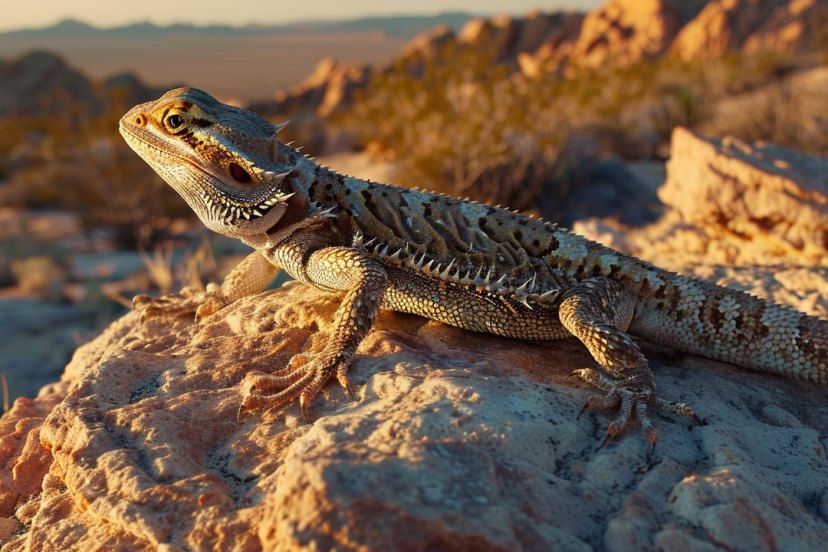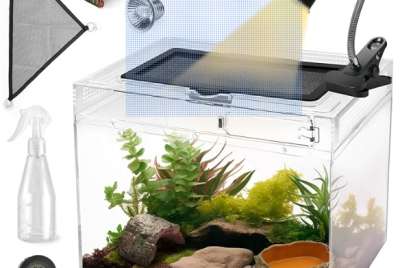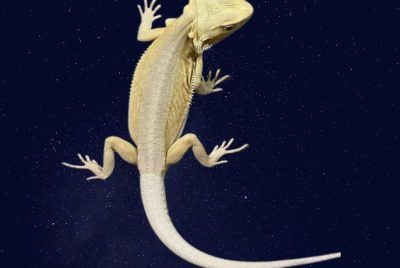Bearded Dragon Natural Habitat: Everything You Need to Know
When I first got into bearded dragon care, one of the most fascinating things I learned was where these little guys actually come from. Understanding the beardeed dragon natural habitat is the secret to creating the perfect home for them in captivity. So, let’s dive into the wild world of bearded dragons and see what life looks like for them outside the glass tank.
Where Do Bearded Dragons Come From?
The Wild Origins of Bearded Dragons
Bearded dragons are native to Australia. Yep, these desert-dwelling reptiles didn’t come from your local pet store—they were thriving in rugged landscapes long before we ever brought them into our homes. They’re perfectly adapted to the hot, dry, and sometimes harsh Australian outback.
Types of Bearded Dragons in Nature
There are several species of bearded dragons in the wild, but the most common one you’ll see in captivity is the Pogona vitticeps. Others like Pogona barbata and Pogona minor also roam the wild, each adapted to specific regions.
Climate and Environment of Their Natural Home
Temperature Ranges in the Wild
The Australian outback gets hot. During the day, temperatures can reach well over 100°F (38°C), while at night, it can drop significantly. This constant fluctuation teaches us how important proper heating and cooling is for captive dragons.
Natural Lighting and Sun Exposure
Beardies are sun lovers. In the wild, they spend hours basking under the scorching sun to absorb UVB rays, which are crucial for vitamin D3 production. Without it, they can’t process calcium properly.
Seasonal Changes in Their Habitat
Bearded dragons experience seasonal shifts—scorching summers and cooler winters. During colder months, they often go into brumation, a hibernation-like state, which some pet dragons mimic even in captivity.
Terrain and Landscape
Rocky Areas and Desert Plains
Bearded dragons thrive in semi-arid regions filled with rocks, dirt, and sparse vegetation. Rocks serve as basking spots, while sandy soil gives them room to dig burrows.
Trees, Bushes, and Hiding Spots
They’re not strictly ground-dwellers! In the wild, beardies climb low branches or bushes to bask or keep an eye out for predators.
Water Sources in the Wild
Since they come from dry environments, water is scarce. They’ve adapted to absorb much of their hydration from the food they eat, like insects and leafy greens.
Diet in Their Natural Habitat
What Do They Eat in the Wild?
In the wild, beardies are opportunistic eaters. They munch on insects, small vertebrates, flowers, and leafy plants.
Hunting vs. Foraging Behavior
You’d be surprised how skilled they are at hunting! They’ll chase down crickets or beetles with lightning speed, then casually munch on wild greens.
How Their Diet Differs in Captivity
In captivity, we often provide store-bought insects and cultivated veggies. While this works, it’s not as varied as the wild. That’s why offering a mix of protein and greens is key to mimic their natural diet.
Behavior in Their Natural Environment
Basking Habits and Thermoregulation
Beardies are like little solar panels—they soak up heat to regulate their body temperature. You’ll often see them sitting on rocks with their mouths open, a natural cooling mechanism.
Social Structure and Territorial Behavior
Bearded dragons are generally solitary. In the wild, males defend territories, while females roam more freely. This is why keeping two dragons in one tank can get tricky.
Natural Predators and How They Survive
Birds of prey, snakes, and larger reptiles all see beardies as snacks. To survive, they rely on camouflage, burrowing, and their iconic beard display.
Reproduction and Life Cycle in the Wild
Mating Season and Courtship Behavior
Spring and summer in Australia mark the breeding season. Males show off head-bobbing, arm-waving, and even darkened beards to impress females.
Egg Laying and Hatchling Survival
Females lay clutches of 15–30 eggs in sandy burrows. Hatchlings face tough odds in the wild, with predators everywhere. Only the strongest survive.
Replicating the Natural Habitat in Captivity
Tank Size and Layout Suggestions
An adult bearded dragon needs at least a 40-gallon tank, but bigger is better. Add basking rocks, climbing branches, and hideouts to mimic the wild.
Lighting and Heating Tips
Provide UVB lighting for 10–12 hours a day. Create a basking spot around 100–110°F and a cooler area at 75–85°F to allow thermoregulation.
Safe Substrates That Mimic Nature
Avoid loose sand (it can cause impaction). Instead, use reptile carpet, tile, or a mix of soil and clay designed for reptiles. These mimic the natural ground safely.
Common Mistakes Owners Make
Overlooking UVB Lighting
Without UVB, beardies develop metabolic bone disease. Think of it as trying to live without sunlight—you just can’t thrive.
Using the Wrong Substrate
Loose sand or gravel is a no-go. It might look “natural,” but it’s risky for digestion.
Inconsistent Temperatures
If your tank isn’t properly heated, your dragon won’t digest food well, leading to health problems.
Why Understanding the Natural Habitat Matters
Better Health and Longevity
When you recreate their natural environment, your dragon will thrive—living longer, healthier, and happier.
Natural Behaviors in Captivity
A proper setup encourages natural behaviors like basking, burrowing, and climbing, which makes their life in captivity much more enriching.
Conclusion
Bearded dragons may come from the wild deserts of Australia, but with the right care, you can give them a slice of their natural habitat at home. The more we learn about their environment, the better we can care for them. After all, a happy bearded dragon is one that feels right at home—even in your living room.
FAQs
1. Do bearded dragons really come from deserts?
Yes, they mostly come from semi-arid desert regions in Australia, with rocky and dry landscapes.
2. How hot is their natural habitat?
Daytime temps can reach over 100°F, while nights can drop much cooler.
3. Do wild bearded dragons drink water often?
Not really. They mostly stay hydrated from food and morning dew.
4. Can I keep two bearded dragons together like in the wild?
Not a good idea. In captivity, they often fight due to limited space.
5. Why is UVB light so important for beardies?
It mimics natural sunlight, helping them produce vitamin D3 for strong bones and overall health.




